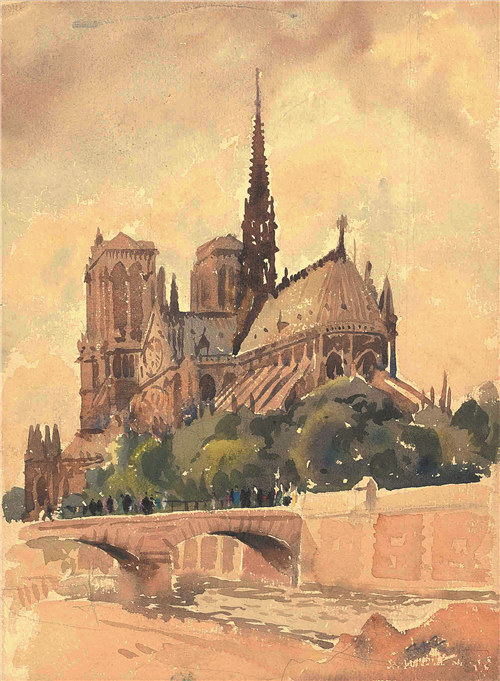

Chinese gardens
The exhibition also pays tribute to Tong Jun's pioneering role in the study, introduction and revival of classical Chinese gardens in modern times.
After returning to his homeland in the 1930s, he mostly worked and lived in Jiangnan — the southern region of the Yangtze River's lower reaches — where he surveyed and mapped many centuries-old private garden houses.
He completed the groundbreaking An Introduction of Chinese Gardens in Jiangnan in 1937.
And he authored Glimpses of Gardens in Eastern China in 1983, the year he passed away, in English to introduce Chinese gardens' beauty and philosophy to the world. Tong Ming later translated it into Chinese and published a bilingual book.
Excerpts from the books, Tong Jun's manuscripts, and drawings and photos of the gardens are also on show.
Liu, the curator, says that after Tong Jun strolled through Europe's history and cultures, he returned home, where he went on to dig into his mother culture's roots. He rendered his studies of Chinese gardens with new perspectives grounded on his education in the US and experiences in Europe. And he traced Chinese architecture from the past to the modern world.
Tong Ming says: "He told the world that once you understand Chinese landscape paintings, you will understand Chinese gardens, too, because they're three-dimensional versions of Chinese landscape paintings.
"The flowerpots, plants, fish pools and rocks are not only works crafted to decorate the gardens. They also ...reveal people's feelings about the world. These gardens are ideal spiritual havens conceived by ancient Chinese."